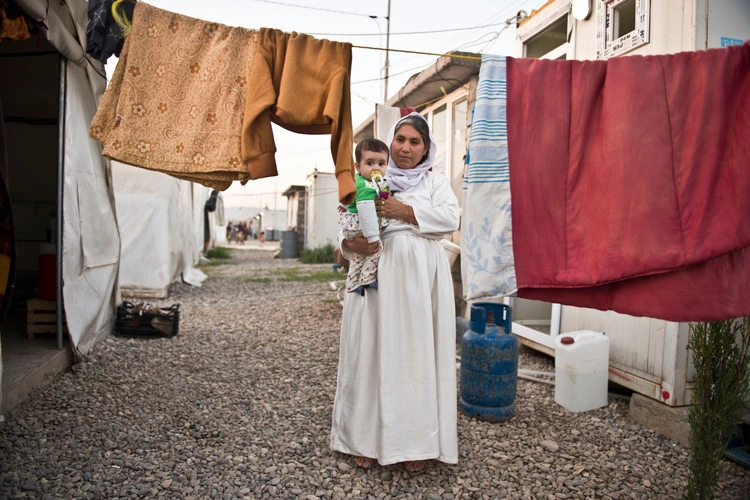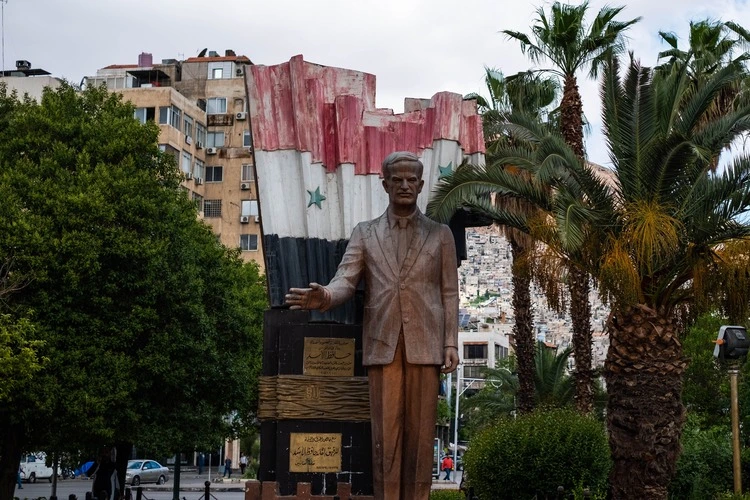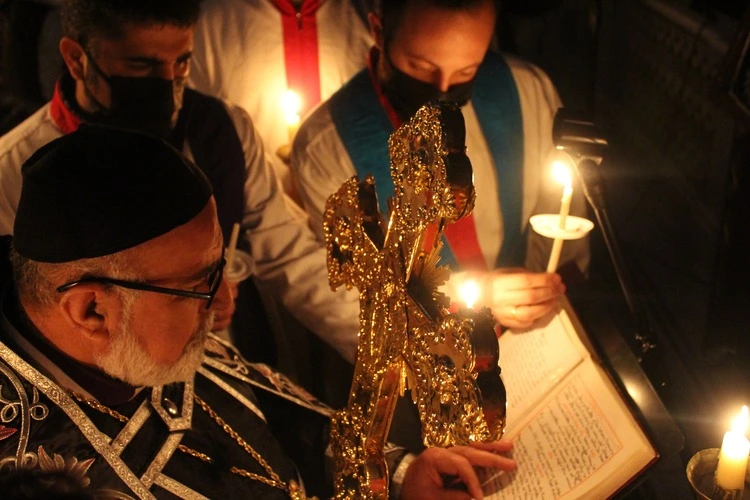
Discover more about Syria’s religious demographics – what are the biggest & smallest groups & where do they live in the country?
By
Home to a variety of religions and ethnic groups, Syria is renowned for its diversity across centuries. The country has also become a home for millions of refugees and other communities, including Kurds, Palestinians and Iraqis.
However, Syria’s cultural landscape has also been marred by conflicts and displacements, all of which threaten the existence of several religious communities who once thrived within the country.
Here we reveal the biggest religious communities in Syria, along with those who have faced dwindling numbers through both historical and ongoing persecution.
Related reads:
Sunni Muslim – 74 per cent
Estimates suggest that 74 per cent of Syria’s population is Sunni Muslim, a demographic that also includes ethnic Arabs, Kurds, Circassians, Chechens, and some Turkmen.
Two major branches of Islam in the world – Sunni and Shia – are both present in Syria, religions whose main difference lies in their belief regarding the successor of Prophet Muhammad.
Sunni Muslims live throughout the country, but a large proportion reside in Syria’s northeastern Idlib region.
Other Muslim groups – 13 per cent
Other Muslim groups, including Shia Islam – along with its variations known as Alawites and Ismailis – together constitute 13 per cent of the population.
Shia Muslims live typically in rural areas, particularly in towns in Idlib and Aleppo Governorates.

The Alwaite (also known as Alawai) live predominately in the Nusaryi Mountain range in northwest Syria, as well as in the inland cities of Homs and Hama. Followers do not have to practice basic Muslim rituals.
The religion has close identification with the recently overthrown Assad regime – as the former president belonged to the religious community. As such, the Alawite community as a whole faces danger of violent persecution, even if their beliefs do not align with those condoned by the former government.
Another Muslim group – The Ismailis – live in Salamiya, but smaller communities also live in Masyaf and Qadmus in the southern part of the coastal mountain range. This sect believes in two imams (religious leaders) – the visible and the hidden – with the identity of the hidden imam unknown to those practising the religion.
Christianity – 10 per cent
For much of Syria’s history, Christianity has been present, and before Islam’s rise in the country, it was the dominant faith.
Some estimates suggest that 10 per cent of the Syrian population identifies as Christian, although other reports put this figure much lower at 2.5 per cent.
Most Christians in Syria belong to Orthodox churches, including the Syriac Orthodox Church, Eastern Catholic churches and the Assyrian Church of the East. These branches of Christianity are also practised in other nearby regions, including Türkiye, where a Syriac Orthodox Church was constructed last year in the country’s capital.

Syrian Christians typically live in and near to Damascus, Aleppo, Homs, Hama, and Latakia, as well as the Hasakah Governorate in the northeast of the country.
Prior to the seventh century, a diverse Christian presence could be found on the outskirts of the Arabian Peninsula and along the Euphrates. The denomination of Christianity that developed during this time was known as ‘Syriac Christianity’, and did not possess the same cultural and historical qualities of European Christianity. Instead, the religion shared similar cultures and traditions as the Arabic world.
Although the presence of multiple religions in the country is characterised by coexistence and mutual understanding, Christians can sometimes still be associated negatively with Western powers.
Druze – 3 to 4 per cent
In Syria, the Druze comprise around 3 to 4 per cent of the country’s total population and mainly reside in Jabal Druze on the southwestern border near Jordan. There are also significant communities in Golan and villages south of Damascus and near Aleppo and Antioch.
The Druze religion incorporates beliefs from Islam, Judaism and Christianity, with strong influences from Greek philosophy and Hinduism, and is a practice dating back to the 11th century.
There are no set holy days, regular sermons or obligations to attend as part of the Druze religion, to reinforce the belief of those who follow the religion that one should be connected with God at all time and not just at particular moments.
Yezidis
Around 15,000 Yezidis, a Kurdish religious minority, still live in Syria today, although their communities were once much larger and sprawling. The group has long been persecuted by Arab and Kurdish Sunni Muslims for their belief systems, and have faced targeted attacks including those perpetrated by ISIS back in 2014 – labelled as genocide by the UN and other international organisations – contributing to the religion’s significant decline in numbers.
In total, under Ottoman rule in the 18th and 19th centuries, Yezidis were victims to 72 genocidal massacres.

Those practising the religion believe they descend from Adam – but not Eve – and are, therefore, different from the rest of humankind. One of the main sources of persecution for Yezidis is their worshipping of a fallen angel known as Malak Ta’us (Peacock Angel), which some wrongly believe signals the religion to be ‘devil-worshipping‘.
Today, Yezidis live in small enclaves in Syria and nearby regions including Iraq, Kurdistan and Türkiye.
The Syrian government classifies Yezidis as Muslim, although Yezidis do not identify as such.
Jews
Before Israel’s establishment back in 1948, around 40,000 Jews lived in Syria, including Arab Jews, Sephardic Jews (who settled in Syria following forced migration from Spain in the 1490s) and Jewish merchants from Europe.
Historically, the hubs for Jewish communities were the cities of Aleppo and Damascus, along with the town Qamishli.
However, since 1948, nearly all Jews have left the country due to rising religious tensions and anti-Jewish sentiment, with escalating attacks on communities. Discriminatory laws, including bans on sales of Jewish properties, freezing of Jewish bank accounts and bans on Jewish travel and emigration, also occurred in Syria throughout the mid-twentieth century, creating a hostile and dangerous environment for those practising the religion to live in.
A 2022 report suggests just four Jewish individuals live in the country, and the largest community of Syrian Jews outside of the country currently live in Brooklyn, New York.




